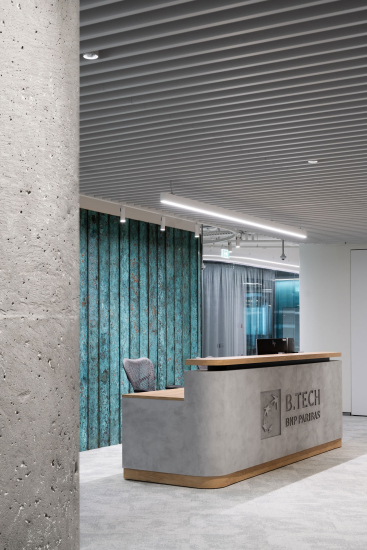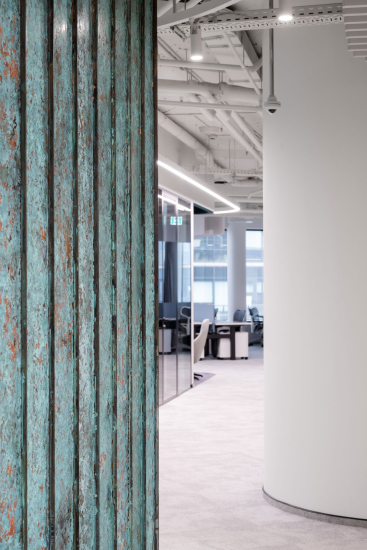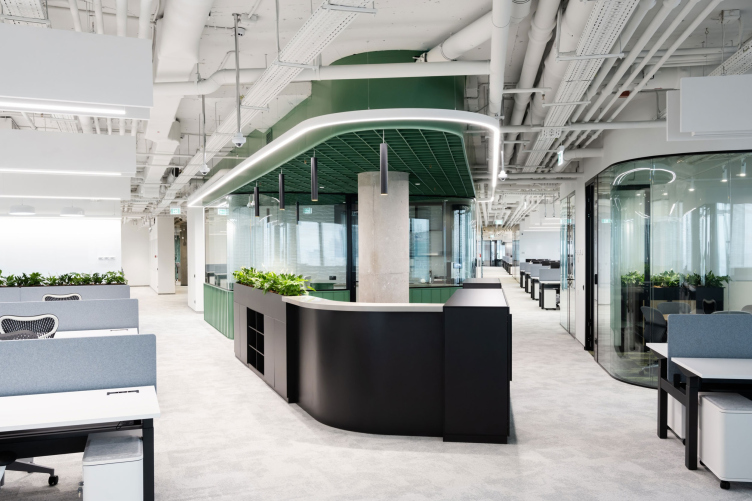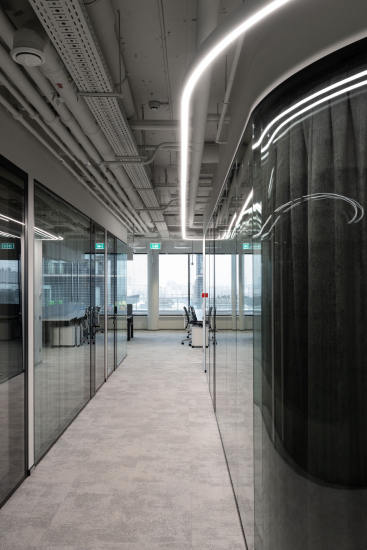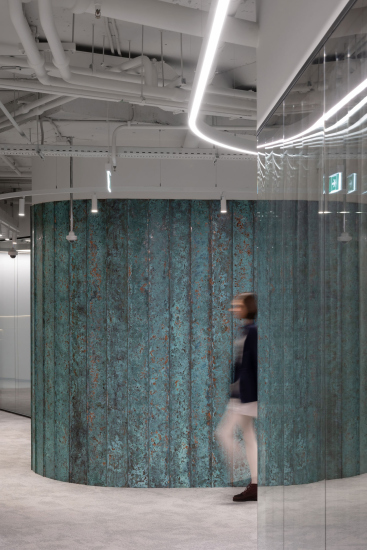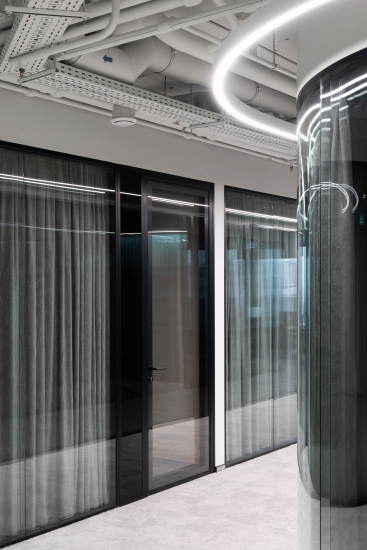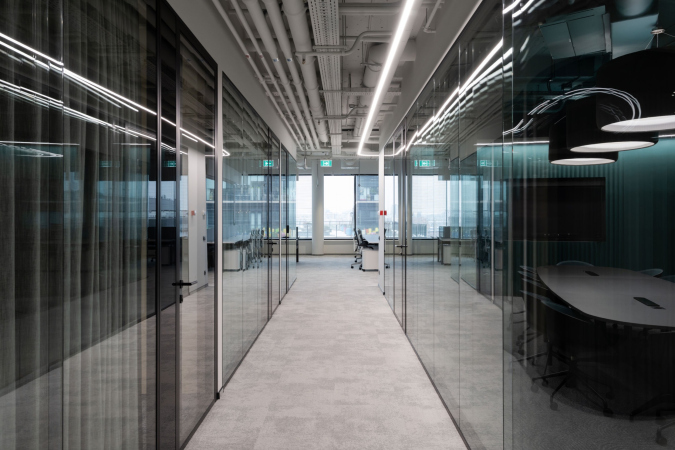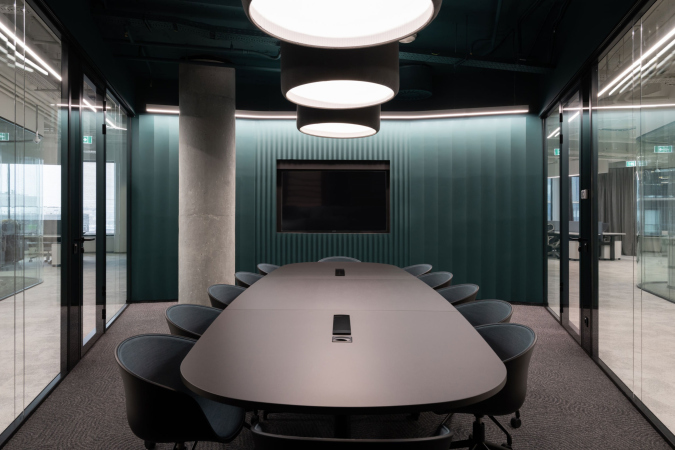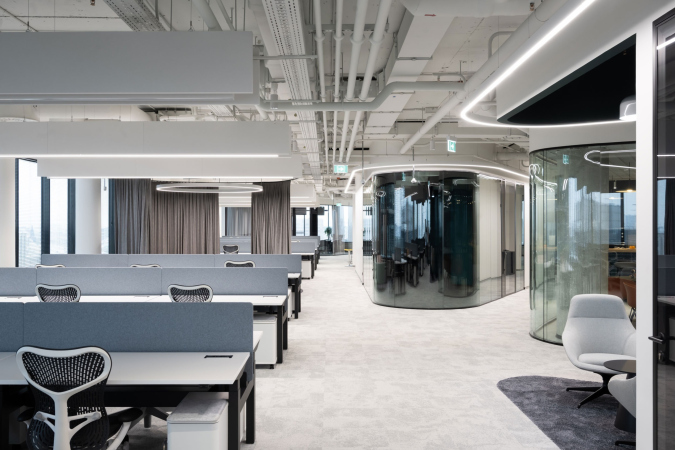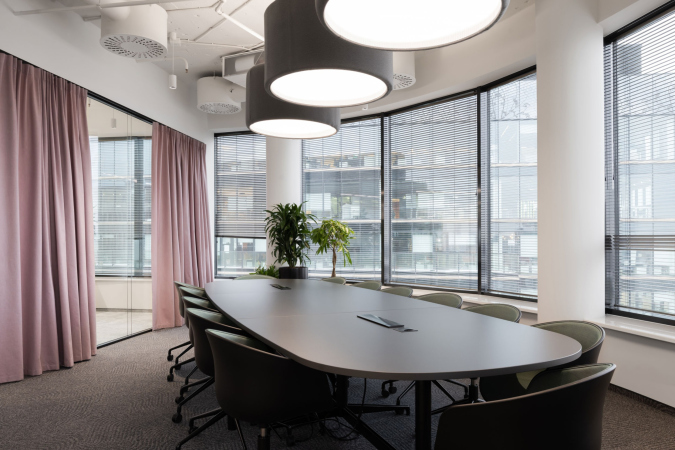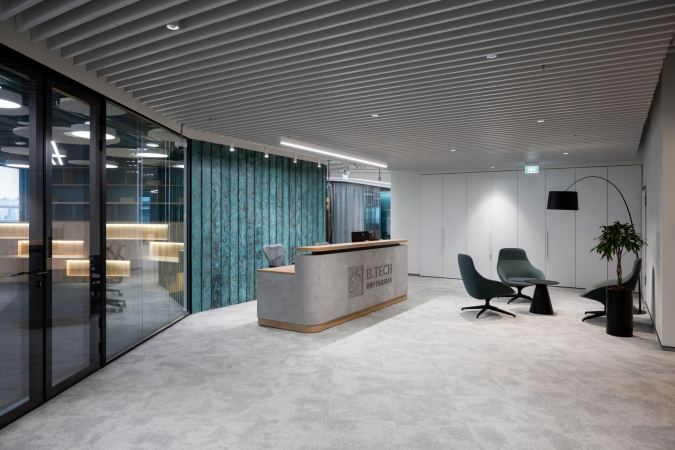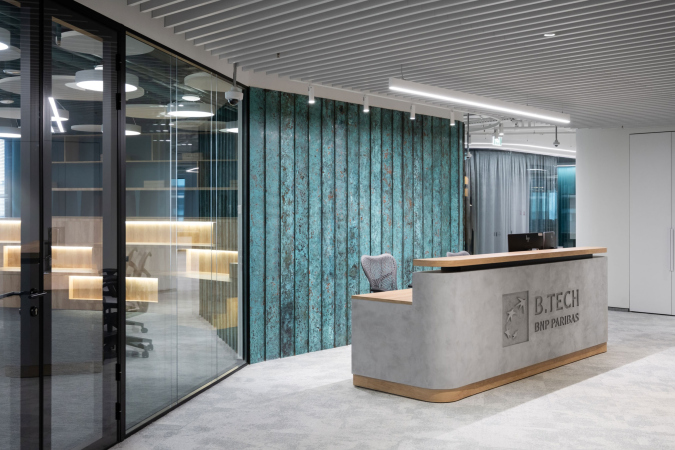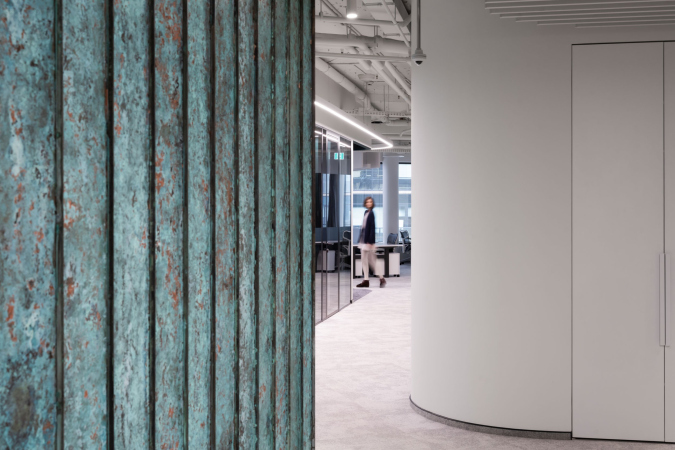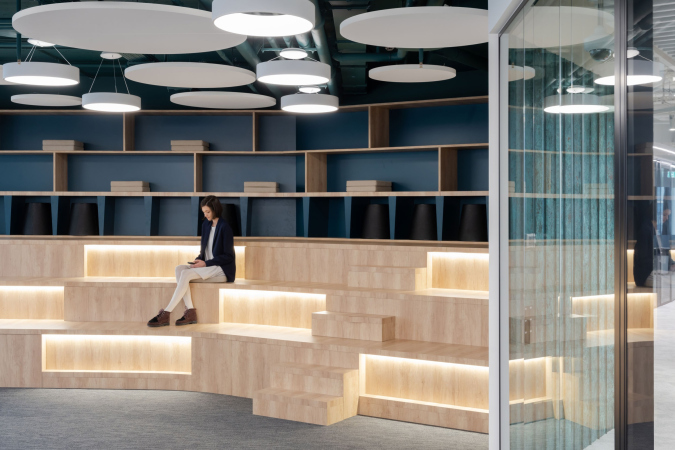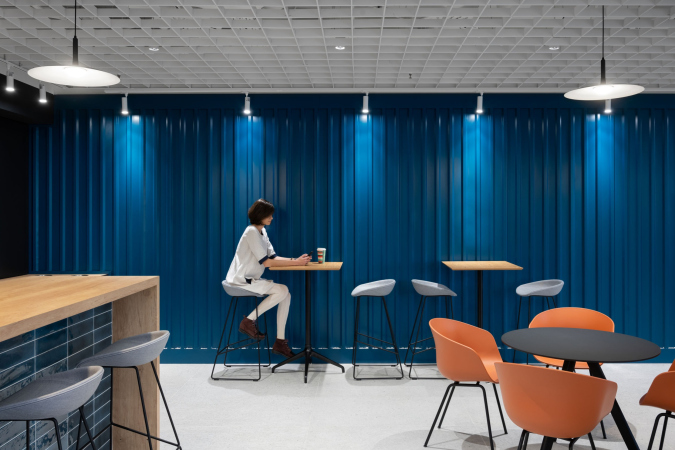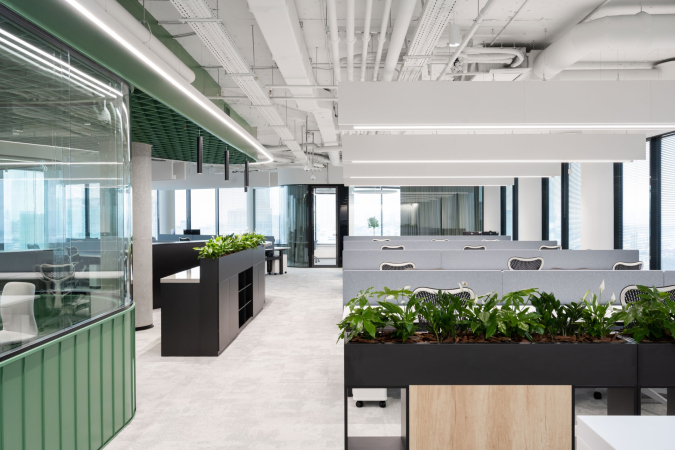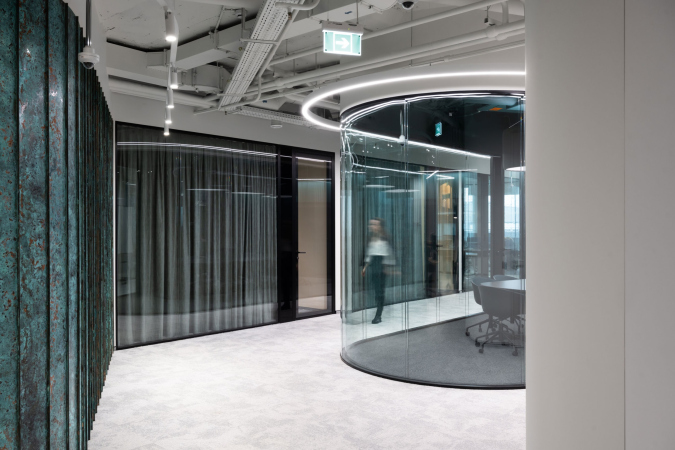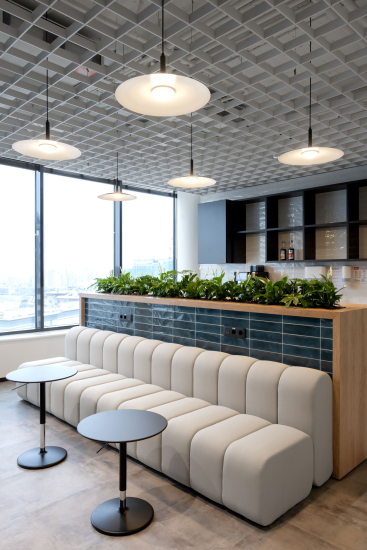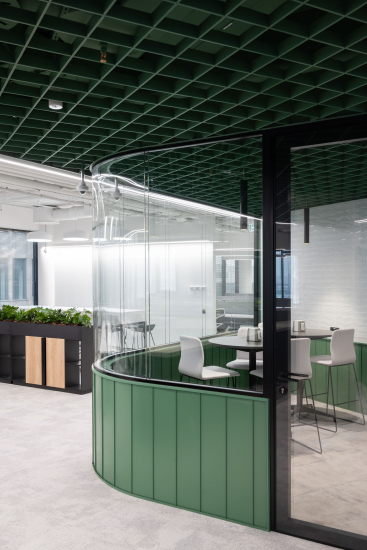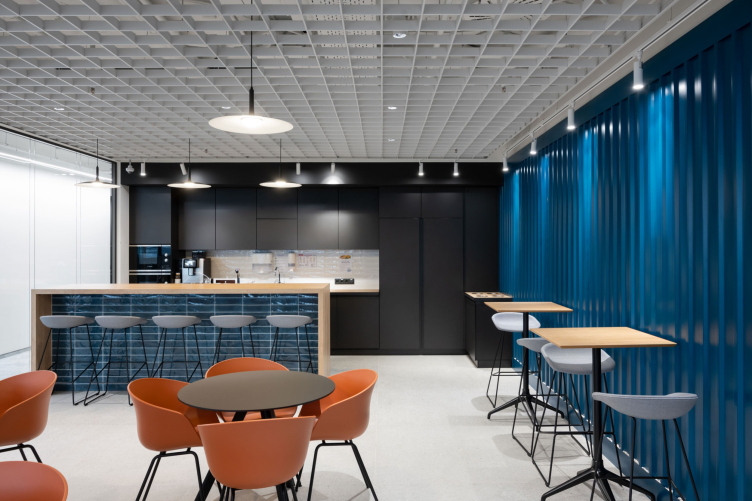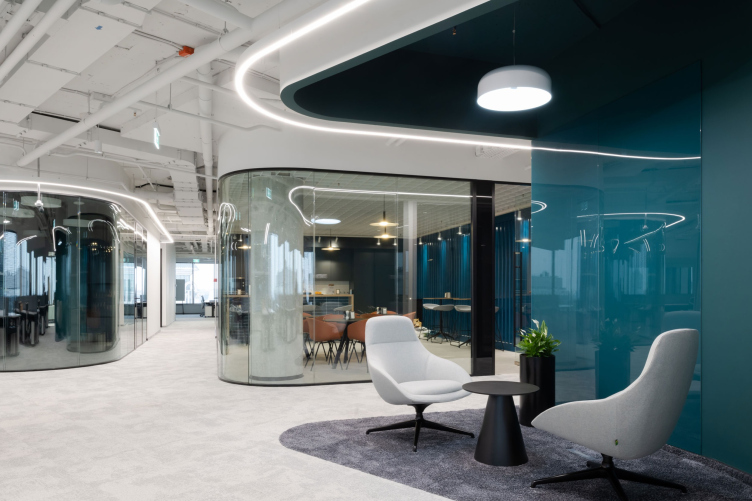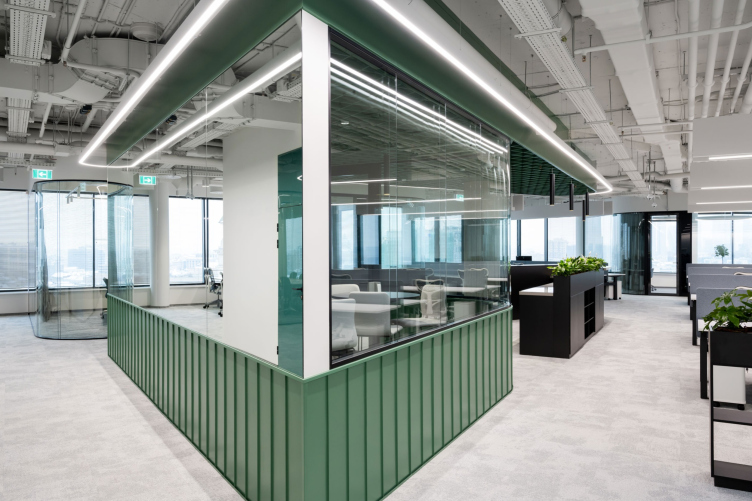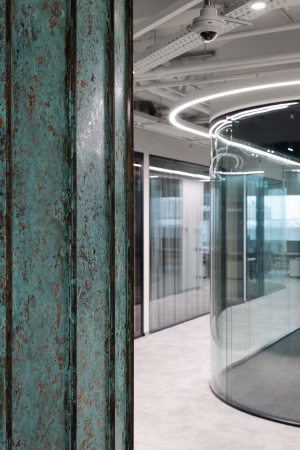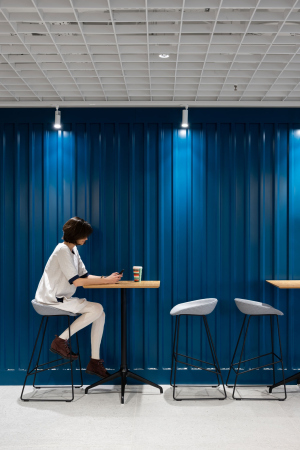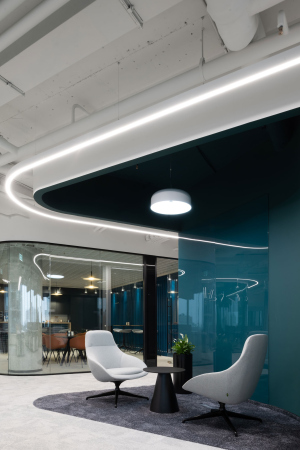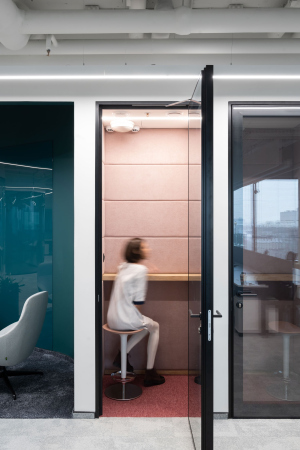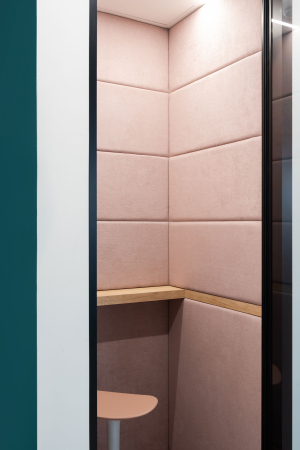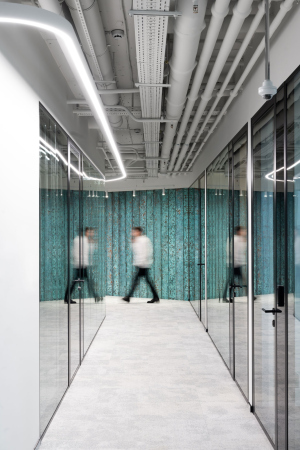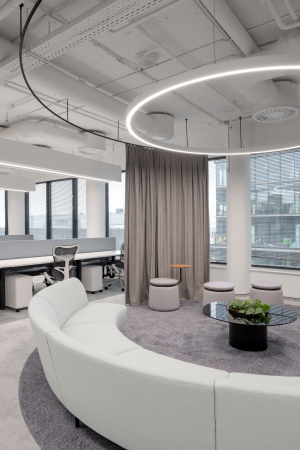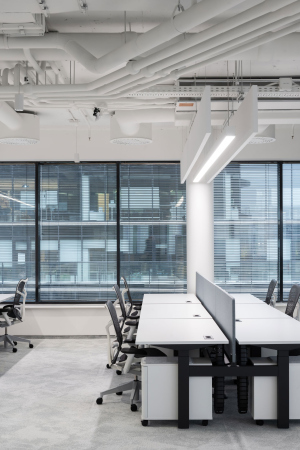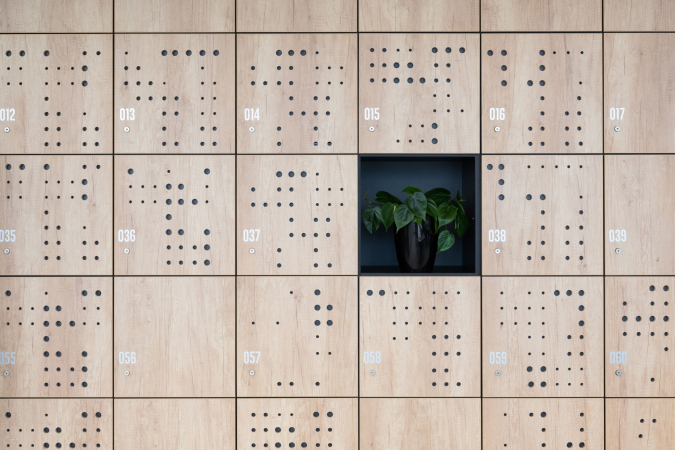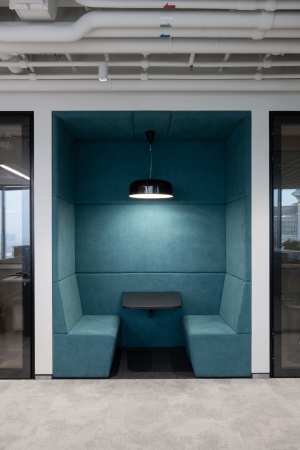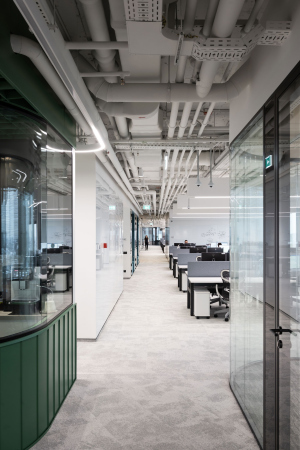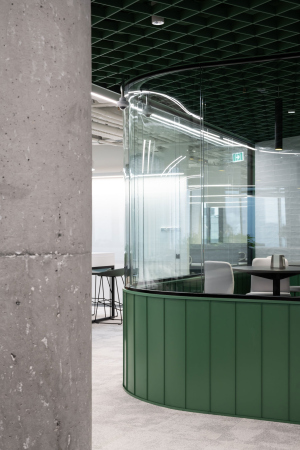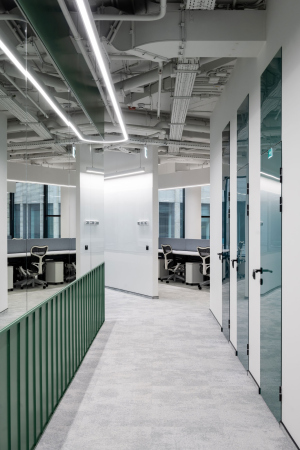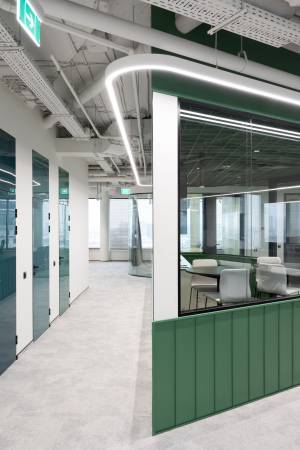Moscow office of BNP Paribas Technology
Copyright: Photograph © Ilia Ivanov
In the agile offices, often chosen by companies with a powerful creative component, the social and working processes are closely interwoven, and the design space is first of all thought out from the point of view of the capacity of creative potential, and the ability to laugh and maintain the processes of generating new ideas. Ideally, working in such an office, has an opportunity to record their ideas and get them across to their colleagues at any given moment, being at any given spot.
It was important for the client to get a flexible space that helps people feel more comfortable at work, one that would increase their creativity and productivity. Among other solutions, one can single out the specifics of the organization of work, when a person does not have a fixed workplace, and the principle works – whoever came earlier chooses the best place. We were very fortunate as the customers discussed their workflows with us quite a lot, and in the end we seemed to be able to come up with the right solution.
Actually, this became the main idea for the T+T project – to propose such functional zoning that would support the required “concentration of ideas”. In order to do that, the architects, first of all, had to consider the working specifics of the client’s team, which was pretty diverse: the number of people in a team varies from three to several dozen people, and, to satisfy the needs of all of these forms of activity, the architects developed several formats of working space.
In addition, the plan of the office was influenced by the shape of the building of the business center as well – as is known, its buildings are triangle with a whole street running between them, while their rounded “noses” stop at the old-believer St. Nicholas Church. According to the architects, these rounded corners imposed some limitations in terms of space organization. In order to ensure a comprehensive planning structure for the users, the architects tried to use the “complicated” spots for meeting rooms and public spaces, making the most of the plastique and the complex geometry of the premises.
As was already mentioned earlier, the employees do not have any fixed workplaces, but they can freely occupy either combined open-space workstations or closed cabinets, if they need concentration. A considerable amount of time is spent by IT specialists in conferences and other kinds of interaction, and because of that the project provides as many as possible places for meetings and joint work – the so-called standup zones of various sizes: these are placed after every 3 or 4 rows, at an equal distance from the workplaces.
On the plan, the workstations are placed along the facade of the building, catching as much of natural light as possible, and alternating with the “aquariums” of the meeting rooms – these are designed with the use of curvilinear tinted glass, and are ranked by size: from small ones for 4 to 6 people to large ones up to 14 employees. In the center of the premises, there is a triangular “island” with a kitchen, whose outlines are reminiscent of the smooth curves of the business center.
Wherever workplaces are located, the architects provided marker walls and mobile interactive boards so that the employees could faster put down their ideas and conduct quick meetings without ever leaving their workplaces. The office has many walls in it, coated with milky glass, easy to write on.
Moscow office of BNP Paribas Technology
Copyright: Photograph © Ilia Ivanov
Moscow office of BNP Paribas Technology
Copyright: Photograph © Ilia Ivanov
The grey and white colors prevail in the decoration of workstations, which allows people to concentrate for long periods of time without getting tired, as well as add colorful accents – these are executed in blue and green colors in accordance with the company’s brand book. For example, against the background of monochrome walls and floor appear bright-colored counterpoints of corrugated inserts of “patinated copper” with the use of folded metal, blue “cabins” for communication, and the green “waffle” kitchen ceiling. Another textured highlight is presented by the surfaces of the exposed concrete of the columns and the reception desk: in combination with open utility lines on the ceiling, they “remind” about the company’s technological bias.
Georgy Tyugaev, T+T Architects
“The choice of colors and materials was, on the one hand, determined by the client’s corporate colors, which we used in common-use and recreation areas. On the other hand, we aimed to create a space that would allow us to work comfortably for as long as possible – for this, the neutral white-gray scale was a good fit. Patinated copper, shades of green and turquoise patina, which successfully correlate with BNPP's signature colors, were chosen as the accent material.”
On the whole, the colorful accents are grouped in the premises with recreational functions – and these are rather numerous here, because it is commonly accepted that interaction between the employees must not be limited to working processes alone: these are the transparent green kitchen, the navy blue coffee points, the splendid white lounges with large sofas and panoramic views of the district around the Belorusskaya metro station, and a special room for doing sports. There is also yet another, “image” recreation area, called “town hall” – with an amphitheater of its own and backlit steps. Here, the deep blue of the corrugated ceiling and the walls is enriched by warm woodwork, and a very cozy space appears where you can sit down and read a book, have a chat with your colleagues or play table tennis.
Moscow office of BNP Paribas Technology
Copyright: Photograph © Ilia Ivanov
Moscow office of BNP Paribas Technology
Copyright: Photograph © Ilia Ivanov
As a result, with a rather limited floor space, further “cut down” by the complex outline of the building itself, T+T Architects managed to place as many working areas of the most varied formats as possible. Spatial and functional diversity, which is fundamental for creative spheres, such as the IT sector, was achieved by using verified geometry and flexible zoning, dynamic lines of rooms and furniture, and a combination of carefully selected textures and shades of materials.



